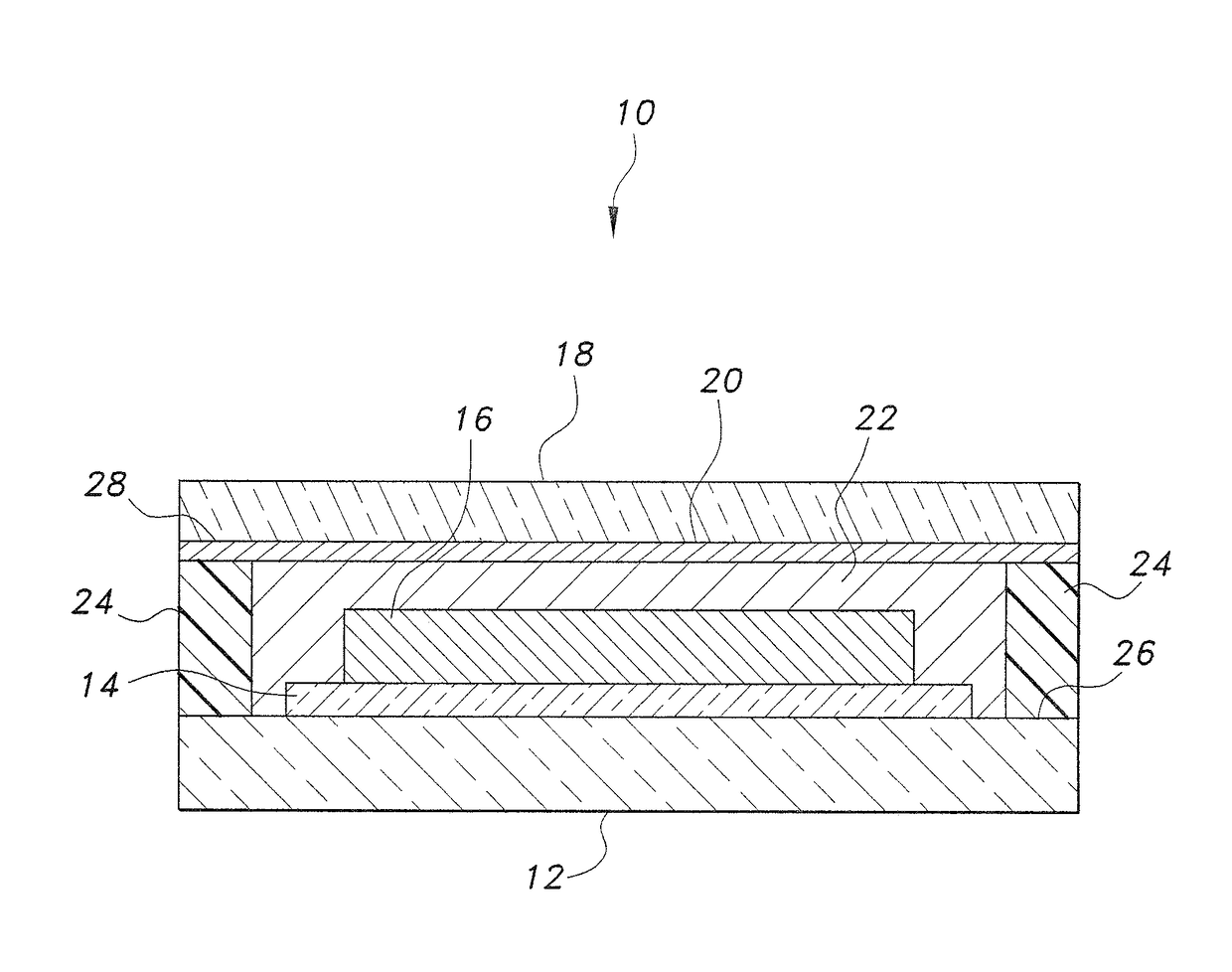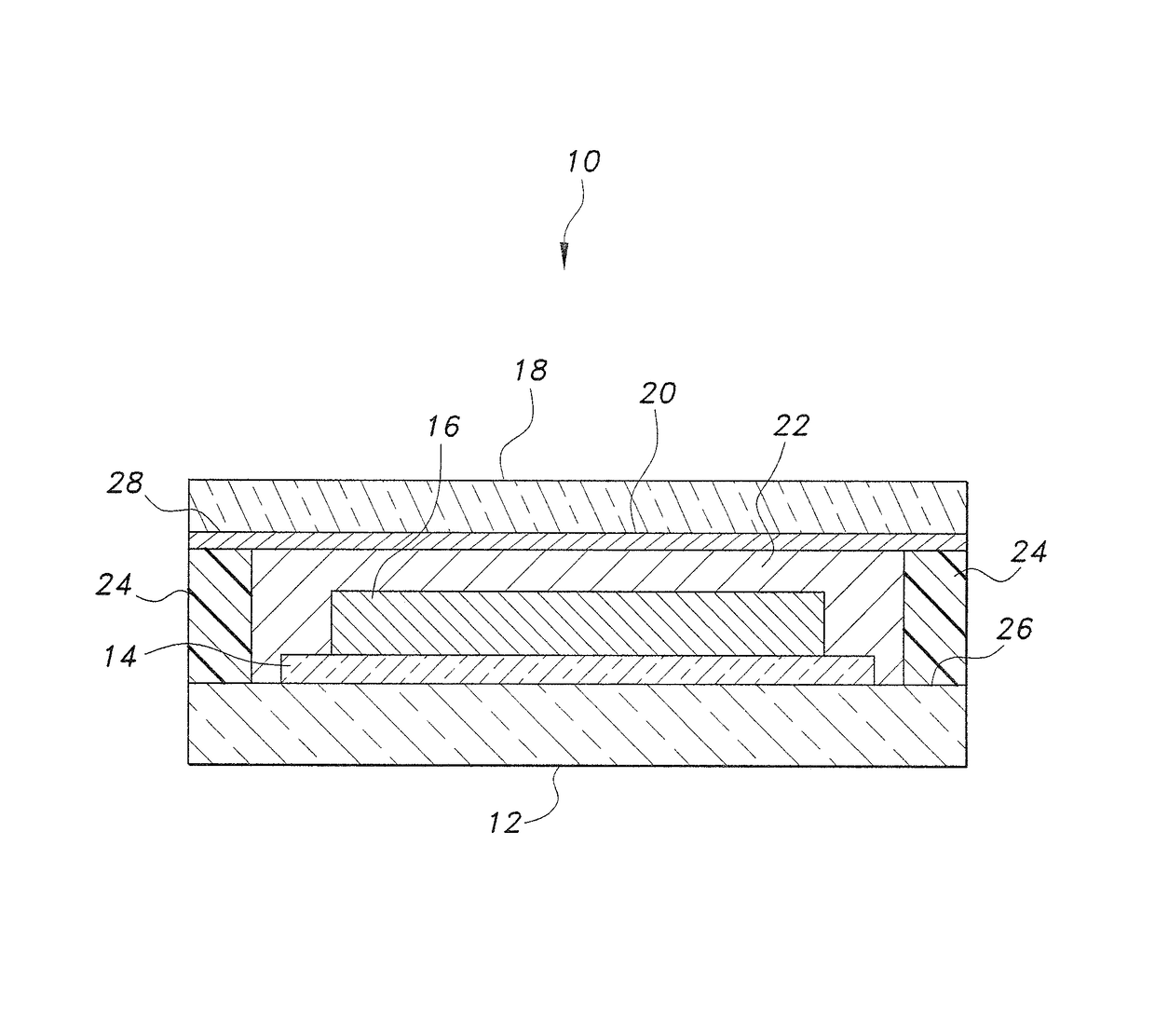Dye-sensitized solar panel
- Summary
- Abstract
- Description
- Claims
- Application Information
AI Technical Summary
Benefits of technology
Problems solved by technology
Method used
Image
Examples
example 1
[0014]A control sample was prepared using titanium nanoparticles synthesized with henna (Lawsonia inermis) extract as a reducing agent, but without the B. vulgaris subsp. cicla dye sensitizer. The titanium nanoparticles were prepared as a paste in nitric acid and coated on a first transparent substrate, formed from fluorine-doped tin oxide. A metal electrode was attached to the first transparent substrate. The paste was left to dry, forming a titanium nanoparticle layer. Small drops of lemon juice were then applied as the electrolyte. A metal plate was coated with graphite (obtained from a pencil) to form the counter electrode, which was mounted on a second transparent substrate, also framed from fluorine-doped tin oxide. The coated sides of the two substrates were brought together, but offset so that uncoated glass extended beyond the sandwich. The metal electrode did not completely cover inner surface of the substrate. A seal was applied on all sides to prevent leakage of the elec...
example 2
[0017]In a second example, a sample solar panel was prepared using the titanium nanoparticles synthesized using henna (Lawsonia inermis) extract as a reducing agent and with the B. vulgaris subsp. cicla dye sensitizer layer supported thereon. The titanium nanoparticles were prepared as a paste in nitric acid and coated on a first transparent substrate to which a metal electrode was mounted. The first substrate was formed from fluorine-doped tin oxide. The paste was left to dry, forming the titanium nanoparticle layer. The coated first substrate with the titanium nanoparticle layer was soaked in the B. vulgaris subsp. cicla dye for a period of 24 hours for adsorption of sufficient dye onto the titanium nanoparticle layer to form a sensitizer. The structure was then rinsed with ethanol to remove any excess dye and, when dry, small drops of lemon juice were applied as the electrolyte. A metal plate was coated with graphite (obtained from a pencil) to form a counter electrode, which was...
example 3
[0019]In a third example, a sample solar panel was prepared using a composite of titanium nanoparticles synthesized with henna (Lawsonia inermis) extract as a reducing agent and zinc oxide nanoparticles synthesized with henna (Lawsonia inermis) extract as a reducing agent, with the B. vulgaris subsp. cicla chromophore dye supported thereon. 0.5 g of the titanium nanoparticles and the zinc oxide nanoparticles were mixed together and ground in a pestle and a few drops of nitric acid were added to form a paste.
[0020]The paste was coated on a first transparent substrate to which a metal electrode was mounted. The first transparent substrate was formed from fluorine-doped tin oxide. The paste was left to dry, forming the composite nanoparticle layer. The coated first substrate with the composite nanoparticle layer was soaked in the B. vulgaris subsp. cicla dye for a period of 24 hours to adsorb enough of the dye onto the composite nanoparticle layer to provide a sensitizer. The structure...
PUM
| Property | Measurement | Unit |
|---|---|---|
| resistance | aaaaa | aaaaa |
| diameter | aaaaa | aaaaa |
| diameter | aaaaa | aaaaa |
Abstract
Description
Claims
Application Information
 Login to View More
Login to View More - R&D
- Intellectual Property
- Life Sciences
- Materials
- Tech Scout
- Unparalleled Data Quality
- Higher Quality Content
- 60% Fewer Hallucinations
Browse by: Latest US Patents, China's latest patents, Technical Efficacy Thesaurus, Application Domain, Technology Topic, Popular Technical Reports.
© 2025 PatSnap. All rights reserved.Legal|Privacy policy|Modern Slavery Act Transparency Statement|Sitemap|About US| Contact US: help@patsnap.com



